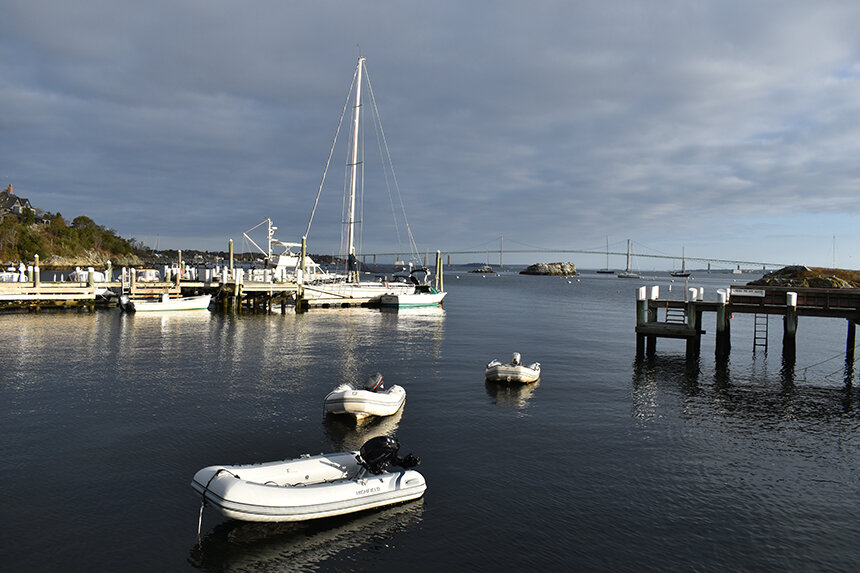More New Construction Allowed on Rhode Island Open Space
June 20, 2016
PROVIDENCE — Rhode Island is running low on open space, but legislation passed at the last minute during the 2016 General Assembly session allows builders to make the most of what is left.
The bills (H7651 and S2591) permit wetland buffers to be included in determining the number of homes and apartments that can be built on a parcel of real estate.
“Homeowners should get the full beneficial use of their land,” said Rep. K. Joseph Shekarchi, D-Warwick, sponsor of the House bill that passed, 49-15, on June 17.
Dubbed the “Land Fairness Act,” the legislation is headed to Gov. Gina Raimondo’s desk, where she will either sign it or if unsigned within six days will become law. A veto isn’t expected.
The legislation was a surprise follow-up from a law passed in 2015 that allows the state to establish universal protective zones for freshwater wetlands.
The Rhode Island Builders Association (RIBA) and the real-estate industry pushed for the 2015 law, saying they needed clear and consistent building regulations. Environmentalists and municipal planners resisted the effort, fearing the statewide rules would hurt communities committed to preserving rural characters and protecting sensitive wetlands and drinking-water supplies.
After a yearlong study, a commission representing developers, planners and environmentalists agreed to enact statewide wetland protective areas, called jurisdictional zones, in addition to increasing those zones to include streams and seasonal wetlands such as vernal pools. The Department of Environmental Management (DEM) hasn’t issued those regulations and has until the end of the year to do so.
Rhode Island development was given a similar boost in 2013, with passage of a bill allowing unbuildable sloped land to be included in lot sizes.
This year’s Land Fairness Act again put environmentalists and planners on the defensive. Opponents of the legislation fear the increase in building density will overbuild house lots and strain freshwater wetlands. These complex ecosystems provide protection against flooding, and filter pollutants, such as those carried by stormwater runoff, which increases with increased development.
Currently, about half of Rhode Island’s 39 cities and towns exclude wetland buffers. The typical buffer zone provides about 50 feet of protection between wetlands and buildable land. Some municipalities have a larger buffer zone.
“We’re not trying to stop the building down there (in South Kingstown); we are just trying to protect what we have,” South Kingstown Rep. Carol Hagan McEntee, a Democrat, said during a March 10 House hearing.
But, RIBA wasn’t waiting around for DEM’s new jurisdictional zones and their impact. RIBA pushed for further concessions by assuring that whatever the size of the jurisdictional area it will be included in the buildable lot size, further testing the environmental gains of the 2015 law.
This session’s bills were opposed by Save The Bay, Audubon Society of Rhode Island and the Rhode Island League or Cities and Towns, mostly because the builders’ new density rule was taking place before DEM released the the new statewide buffer regulations. Once it became clear the bills would pass, these groups extended the enactment of the Land Fairness Act until Jan. 1. They also added exemptions for buffers surrounding reservoirs.
Rep. Blake Filippi, an Independent whose district includes Block Island and South Kingstown, two communities that exclude wetland buffers in determining building density, said the legislation oversteps the rights of cities and towns.
”This is another example of us infringing on local planning and local zoning,” he said shortly before the House vote.
Shekarchi chided Filippi, who typically votes with Republicans on legislation, for not favoring the free-market principals of deregulation and the right of property owners, investors and developers to get the most money they can for developing open space.
Shekarchi described his Land Fairness Act as “a very Republican bill.” He suggested that cities and towns should be buying open space if they want to protect it, rather than regulate it.
Filippi said the legislation wouldn’t increase building but would prompt some municipalities to enact stricter zoning rules, such as requiring larger lot sizes for new buildings.
Concerns were also raised that including buffers in the density determination will give those buffers a higher value and a higher property tax bill.
Developer and co-chairman of RIBA’s legislative committee Robert Baldwin said the increased density will lower the cost of new houses and apartments and increase the amount of affordable, middle-income housing.
In Rhode Island, Baldwin said during a House hearing, “We have McMansions being built and taxpayer subsidized low-income housing. Everything in between has been crushed.”
The high value of open space, Baldwin argued, isn’t because Rhode Island is the second-most densely populated in the nation but because of large minimum lot sizes.
“We’re trying to lower the cost of housing in the state of Rhode Island,” Baldwin said. ”Do we want to stay in last place or do we want to fix it?”
Categories
Join the Discussion
View CommentsYour support keeps our reporters on the environmental beat.
Reader support is at the core of our nonprofit news model. Together, we can keep the environment in the headlines.
We use cookies to improve your experience and deliver personalized content. View Cookie Settings



